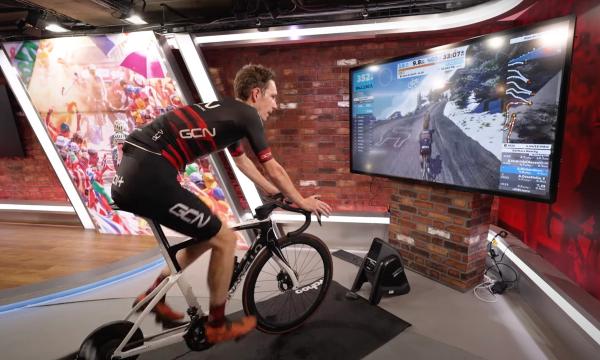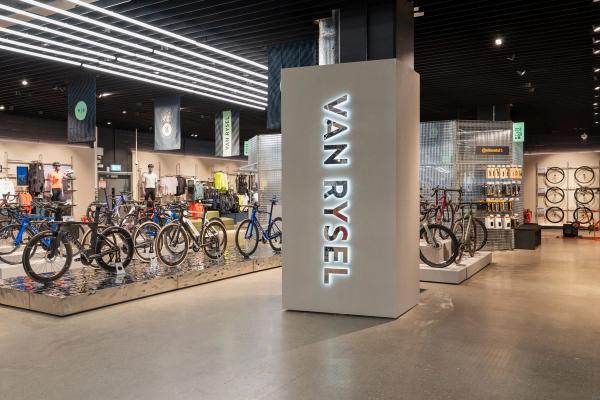GCN Tech Clinic: Wider tyres, dry-weather lube & noisy freehubs
Your latest bike-related questions are under scrutiny from the GCN team in this episode of the Tech Clinic
Alex Hunt
Junior Tech Writer
Alex Paton and Ollie Bridgewood are back in the GCN Tech Clinic to answer some more of your latest tech questions. Ollie is fresh off a trip to Italy, where he spent some time with the engineers at Pirelli, and he is keen to share some of the wisdom he gained from them.
Should I worry about the aero penalty of wider tyres and is there any issue with running a wider tyre at the back?
Wider tyres are ever so slightly less aero as they present a wider footprint to the wind but the actual aerodynamics of the tyre is largely affected by the rim it is mounted to. A lot of modern road wheels are designed around the use of 25-28mm tyres, meaning that a 28mm tyre can in some cases be the most aerodynamically optimised width to use.
We do see some pros using a wider tyre at the rear than at the front partly because aero has less of a pronounced effect towards the rear of the bike. It is also because more of your weight is distributed over the rear of the bike, meaning that there is a benefit to having a wider tyre at the rear.
Although there is a very marginal aero penalty for using wider 30-32mm tyres, unless you frequently find yourself travelling at 45km/h it is not going to be noticeable. By using wider tyres there is the potential that the increase in comfort, traction and vibration damping can negate any aero penalty that a wider tyre brings.
Which is better for climbing: a lightweight tyre with a high rolling resistance or a heavier tyre with less rolling resistance?
In the real world, it must be said that the properties of tyres are almost always the opposite of the question being asked. Lightweight tyres tend to be more supple and offer less rolling resistance whereas heavier tyres generally roll slower. The trade-off comes more in terms of the puncture protection that the tyre offers, as a lightweight tyre will use a thinner construction that is easier to puncture.
What is the best type of chain lube to use in the dry?
As a general rule that can be backed up by multiple independent lab tests, a wax treatment is the fastest and most efficient form of chain lubricant in dry conditions. If you do not want to head down the rabbit hole of immersion, there are plenty of drip-on wax lubricants that offer a similar level of lubrication.
These are applied directly to the chain much like you would with an oil-based lubricant. However, once applied it dries to form a protective wax coating on the links and rollers of the chain.
Are there tubeless sealants that do not contain natural latex for people with a latex allergy?
Some sealants on the market do not use latex as the main compound in the sealant. If you are looking for latex-free sealant it will typically use a chemical called glycol instead. Unlike latex, glycol sealants tend to remain a liquid for a lot longer and don’t suffer the same affliction to drying out. The trade-off for this is that in some cases glycol sealants are less effective at plugging a puncture hole.
My DT Swiss freehub has always been loud but recently it has become even louder, does this mean it needs a service?
The short answer to this one is: yes. If your freehub has recently got noticeably louder it could be a sign that the ratcheting mechanism inside the freehub is running dry and needs to be lubricated. The task at hand will vary in difficulty depending on the specifics of the wheel but essentially all that is needed is a simple freehub service to remove, clean and lubricate the internals of the freehub.
A top tip when you are doing this is to inspect your wheel bearings as if they need replacing you will have the wheel in a position to do this at the same time with relative ease.
Do wider tyres last longer?
In an ideal world where everything is the same, wider bike tyres will theoretically last longer. There are two main reasons behind this, firstly, there is the rationale that wider tyres are more durable and robust due to the increased contact patch they provide. This means that the same force is exerted on a larger area when compared with a narrower tyre. In the instance that the tyre rolls over something that could cause a puncture, it will exert less force on the surface of the tyre reducing the likelihood of a puncture or cut in the surface.
Secondly, once again due to the larger contact patch, the wear rate of the rubber compound is reduced. This is because there is more rubber sharing the load so every part of the tyre is subjected to less wear. Not only do wider tyres roll faster and offer more comfort, they also last longer.
Can I replace SRAM 1X on my bike with Shimano Di2 or should I get a new bike?
Unless there is any real performance benefit that you are trying to hunt out, for example changing from 1x to 2x to give you a wider range of gears, there is very little to gain from upgrading to Di2. If this is the case the most practical solution would be to get a SRAM front derailleur and double chainset and only replace these parts.
Replacing a complete groupset especially if you are changing brand is an incredibly expensive purchase that will not have that much impact on your riding experience. If you do want to upgrade your groupset the best approach is to upgrade it in stages as and when parts wear out over time. Of course, this strategy only works if you are looking to upgrade within the same groupset brand.
If you have any tech-related questions that you need answering, head over to this week’s Tech Clinic video on the GCN Tech YouTube channel and add your question to the comments along with #ASKGCNTECH. Or leave your question in the comments below.








.jpg?w=600&auto=format)


